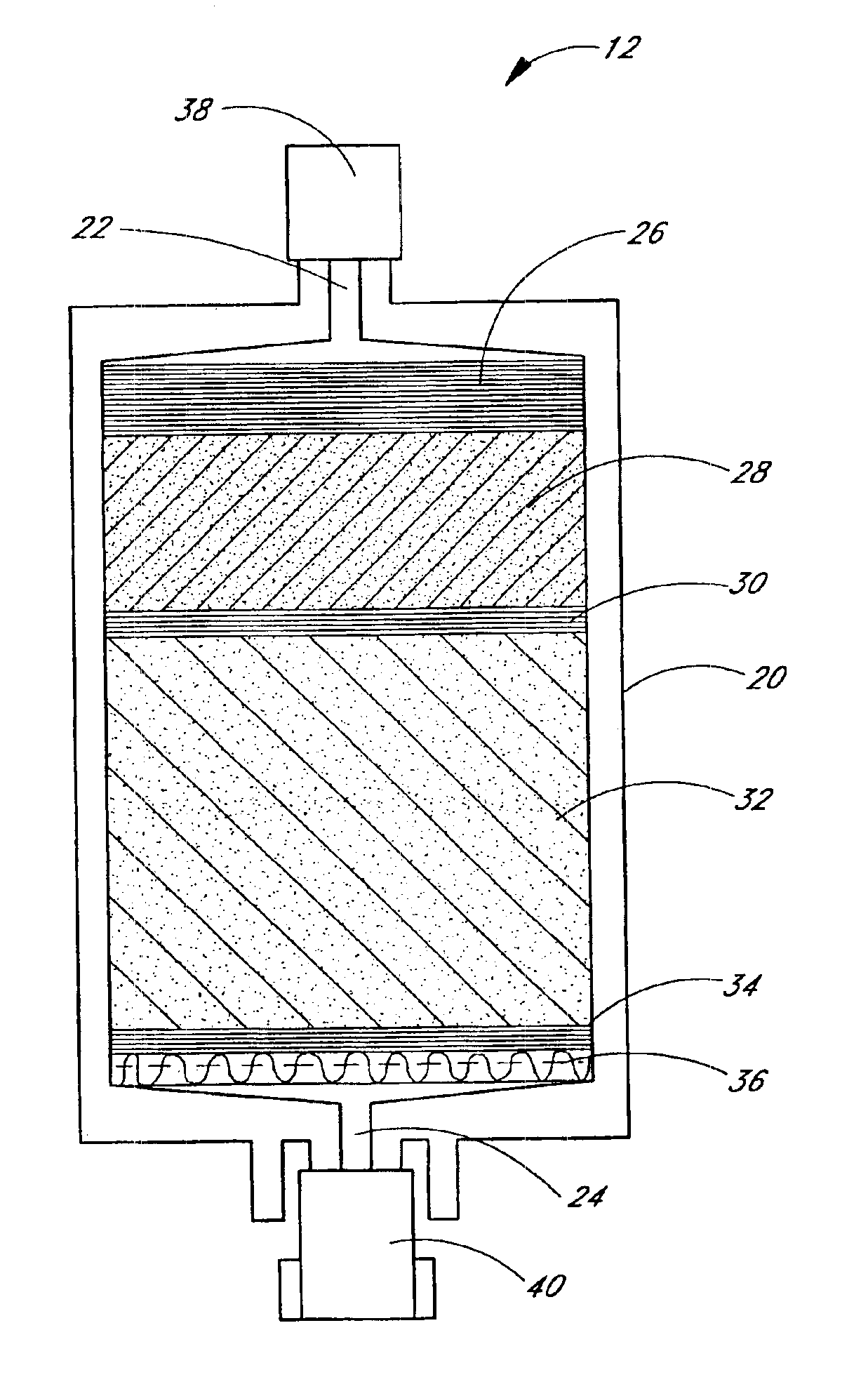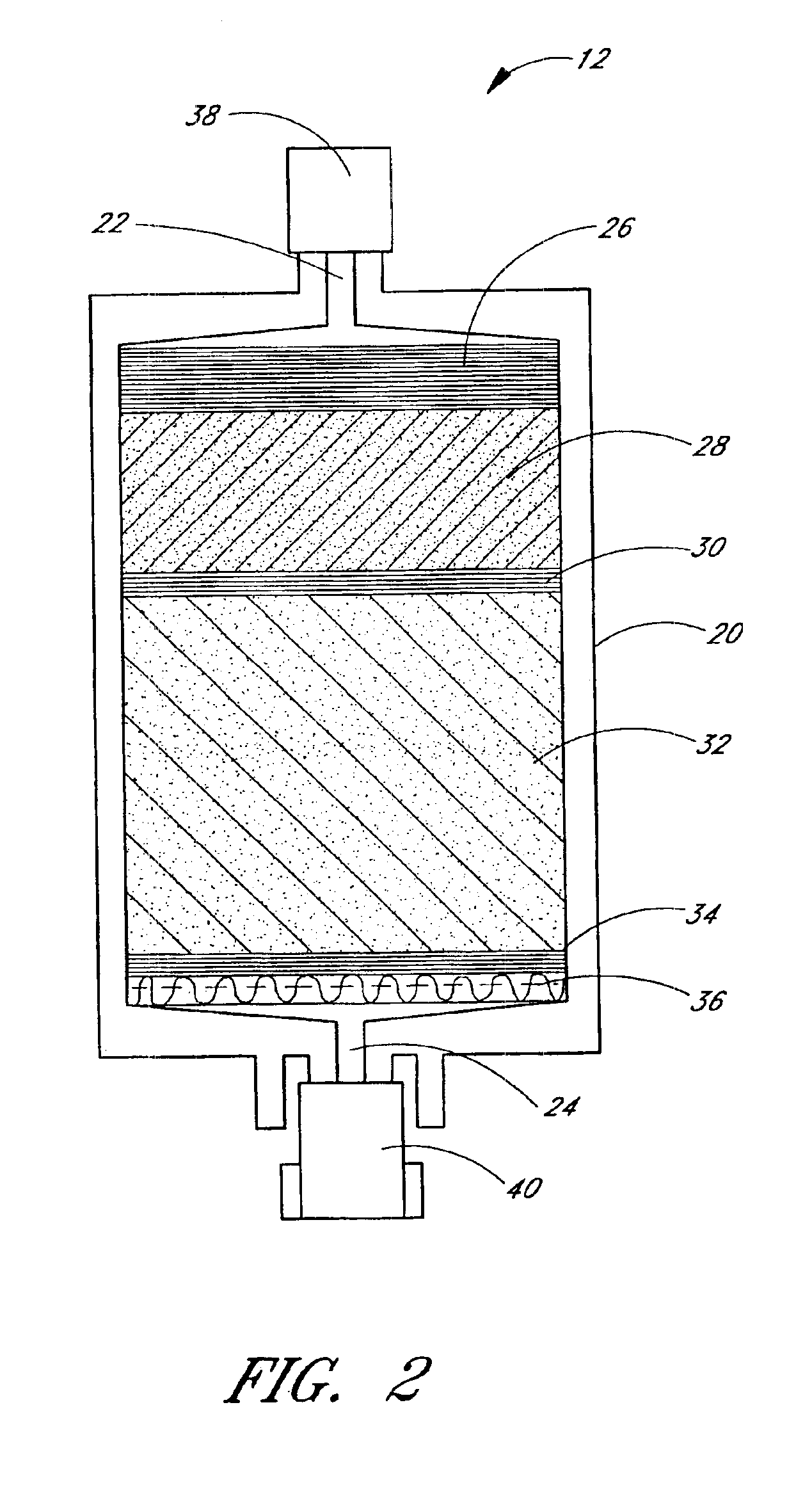Apparatus and method for preparation of a peritoneal dialysis solution
a technology of peritoneal dialysis and apparatus, which is applied in the direction of dissolving, water/sewage treatment by ion exchange, and the nature of treatment water, etc., can solve the problems of dialysis solutions not being stable in solutions, complex and expensive equipment used in hemodialysis, and the inability to formulate and mix dialysis solutions on site at the typical administration location, etc., to achieve simple and inexpensive apparatus, facilitate separation of incompatible reagents, and minimize the likelihood of undesirabl
- Summary
- Abstract
- Description
- Claims
- Application Information
AI Technical Summary
Benefits of technology
Problems solved by technology
Method used
Image
Examples
Embodiment Construction
[0029]While the illustrated embodiments are described in the context of particular formulations and relative proportions of reagents, the skilled artisan will find application for the described methods and devices in a variety of different formulations and proportions of reagents.
System for Preparing Peritoneal Dialysis Solution
[0030]FIG. 1 illustrates a system 10 for producing solutions suitable for peritoneal dialysis. As illustrated, a purified diluent source 12 is connected upstream of a reagent cartridge 14. The cartridge 14, in turn, is in fluid communication with a dialysate reservoir 16 via a tube 18. As set forth in more detail below, purified diluent is provided from the source 12 to the reagent cartridge 14, wherein the dry reagents are dissolved and peritoneal dialysis solution is delivered to the reservoir 16. Alternatively, the solution can be delivered directly to the peritoneal cavity. Advantageously, the solution can be so formed immediately prior to delivery to the...
PUM
| Property | Measurement | Unit |
|---|---|---|
| time | aaaaa | aaaaa |
| pressure | aaaaa | aaaaa |
| pressure | aaaaa | aaaaa |
Abstract
Description
Claims
Application Information
 Login to View More
Login to View More - R&D
- Intellectual Property
- Life Sciences
- Materials
- Tech Scout
- Unparalleled Data Quality
- Higher Quality Content
- 60% Fewer Hallucinations
Browse by: Latest US Patents, China's latest patents, Technical Efficacy Thesaurus, Application Domain, Technology Topic, Popular Technical Reports.
© 2025 PatSnap. All rights reserved.Legal|Privacy policy|Modern Slavery Act Transparency Statement|Sitemap|About US| Contact US: help@patsnap.com



